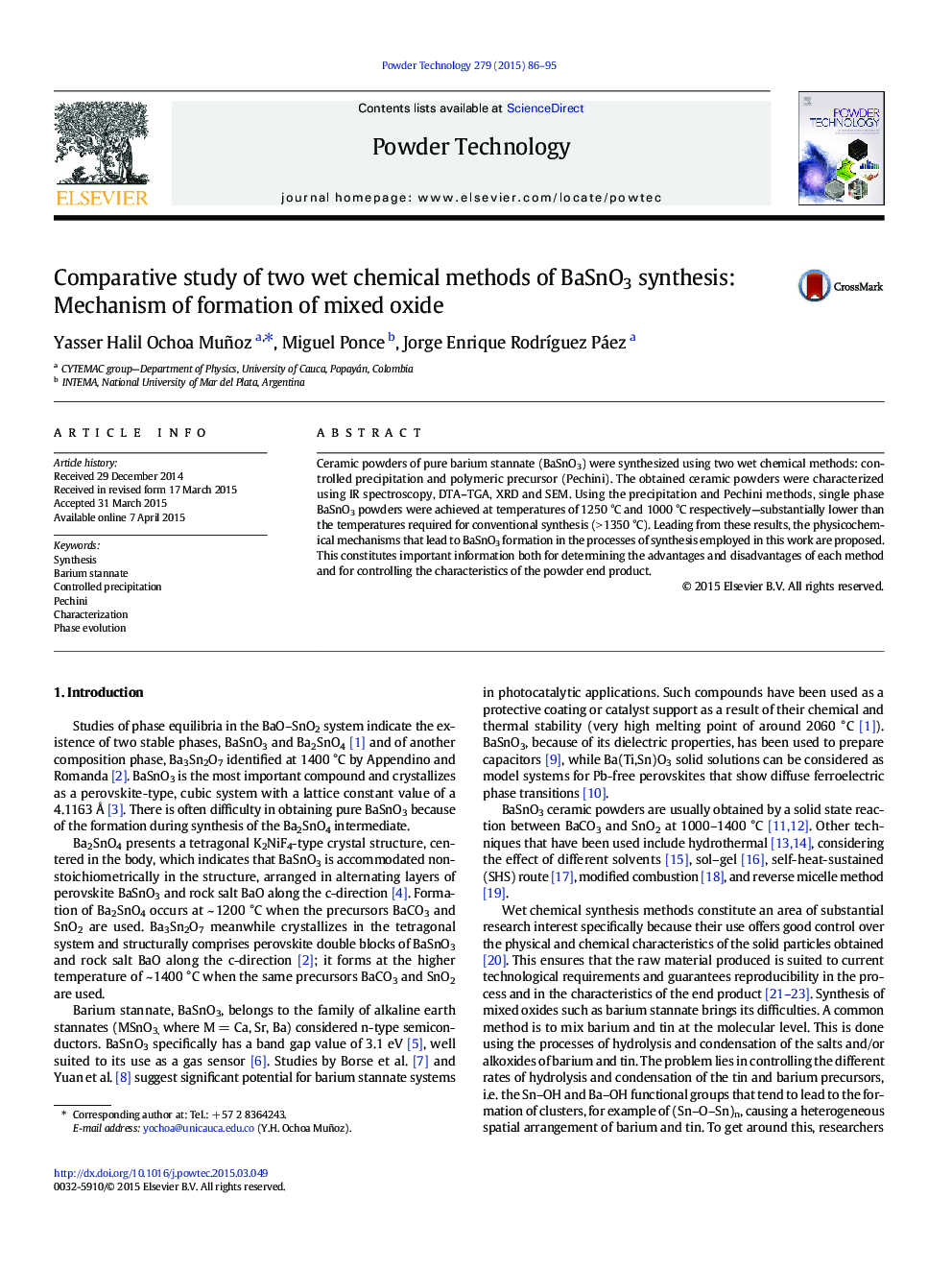| Article ID | Journal | Published Year | Pages | File Type |
|---|---|---|---|---|
| 235563 | Powder Technology | 2015 | 10 Pages |
•Two synthesis methods were used to obtain stoichiometric BaSnO3 powders.•BaSnO3 powders could be prepared in a controlled and reproducible way.•Mechanisms are proposed to explain how the mixed oxide particles are shaped.•The different physical–chemistry transformations of solid particles during the synthesis were profiled.•The chemical synthesis methods used were profiled adequately.
Ceramic powders of pure barium stannate (BaSnO3) were synthesized using two wet chemical methods: controlled precipitation and polymeric precursor (Pechini). The obtained ceramic powders were characterized using IR spectroscopy, DTA–TGA, XRD and SEM. Using the precipitation and Pechini methods, single phase BaSnO3 powders were achieved at temperatures of 1250 °C and 1000 °C respectively—substantially lower than the temperatures required for conventional synthesis (> 1350 °C). Leading from these results, the physicochemical mechanisms that lead to BaSnO3 formation in the processes of synthesis employed in this work are proposed. This constitutes important information both for determining the advantages and disadvantages of each method and for controlling the characteristics of the powder end product.
Graphical abstractFigure optionsDownload full-size imageDownload as PowerPoint slide
